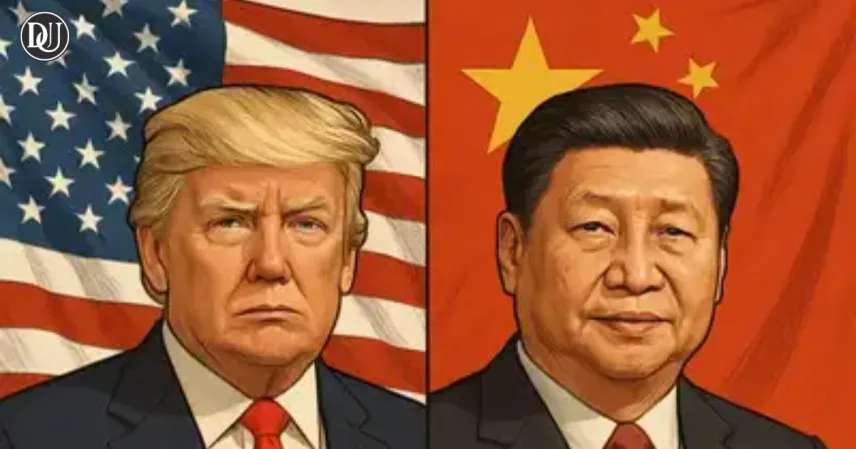In a breakthrough development, the United States and China have concluded two days of high-level talks in Geneva, resulting in a preliminary agreement aimed at reducing the U.S. global goods trade deficit, which has long been a point of contention between the two economic giants. U.S. Treasury Secretary Scott Bessent described the discussions as "substantial progress," emphasizing that both sides are working towards resolving the long-standing issues that have strained trade relations for years. The talks, marked as "candid and constructive" by Chinese officials, hold the potential to de-escalate the trade war that has disrupted global markets.
Key Highlights from the U.S.-China Trade Deal:
-
Addressing the Trade Deficit: One of the central focuses of the Geneva discussions was the reduction of the U.S. trade deficit with China, which currently stands at approximately $1.2 trillion. The agreement aims to ease the pressure from this deficit by promoting a more balanced trade relationship. The U.S. has long criticized China’s trade practices, and this deal signals both sides' intent to address the imbalance.
-
Tariff Adjustments: While the full details of the agreement remain confidential, both the U.S. and China have expressed a willingness to revise existing tariffs that have exacerbated tensions in the past. Tariffs on billions of dollars in goods were introduced by both nations in response to each other's trade policies. The new agreement suggests that some of these tariffs may be reduced or eliminated as part of the negotiation process in the China trade deal.
-
Establishment of Consultation Mechanism: A crucial aspect of the China trade deal is the establishment of a new platform for consultation to address future trade disputes. This mechanism is expected to allow both countries to maintain an open line of communication and resolve issues before they escalate into further conflicts, creating a smoother pathway for future China trade deals.
-
Positive Market Reactions: The news of the China trade deal has had a positive impact on global markets. U.S. stock futures rose following the announcement, while the dollar strengthened against safe-haven currencies, reflecting investor optimism that the trade tensions between the two countries may be easing. The potential for a resolution in the China trade deal has brought renewed confidence to markets that had previously been rattled by the uncertainty surrounding the trade dispute.
Future Outlook:
The United States and China have committed to further negotiations to finalize the China trade deal, and both countries are optimistic about continuing their dialogue. A joint statement detailing the specifics of the agreement is expected to be released shortly, offering a clearer picture of the measures both nations have agreed upon. This agreement marks a potential shift toward cooperation and de-escalation after years of trade friction, where the U.S. had levied tariffs on Chinese goods, and China retaliated with its own set of tariffs.
Although the details remain to be fully disclosed, the success of these talks signals a positive direction for U.S.-China relations. Both sides have indicated that resolving the trade conflict is a priority, as the long-standing tension has not only disrupted bilateral trade but has also had a ripple effect on global markets and economies. The China trade deal could become a model for future international trade agreements.
In conclusion, the U.S.-China trade talks in Geneva have set the stage for a new phase in the relationship between the two superpowers. As more details of the China trade deal emerge, it’s clear that the efforts to reduce the trade deficit and adjust tariffs could significantly impact the global economic landscape, providing a sense of hope that tensions can be alleviated in the near future. This China trade deal has the potential to reshape future trade relations and pave the way for more cooperative international trade agreements.










